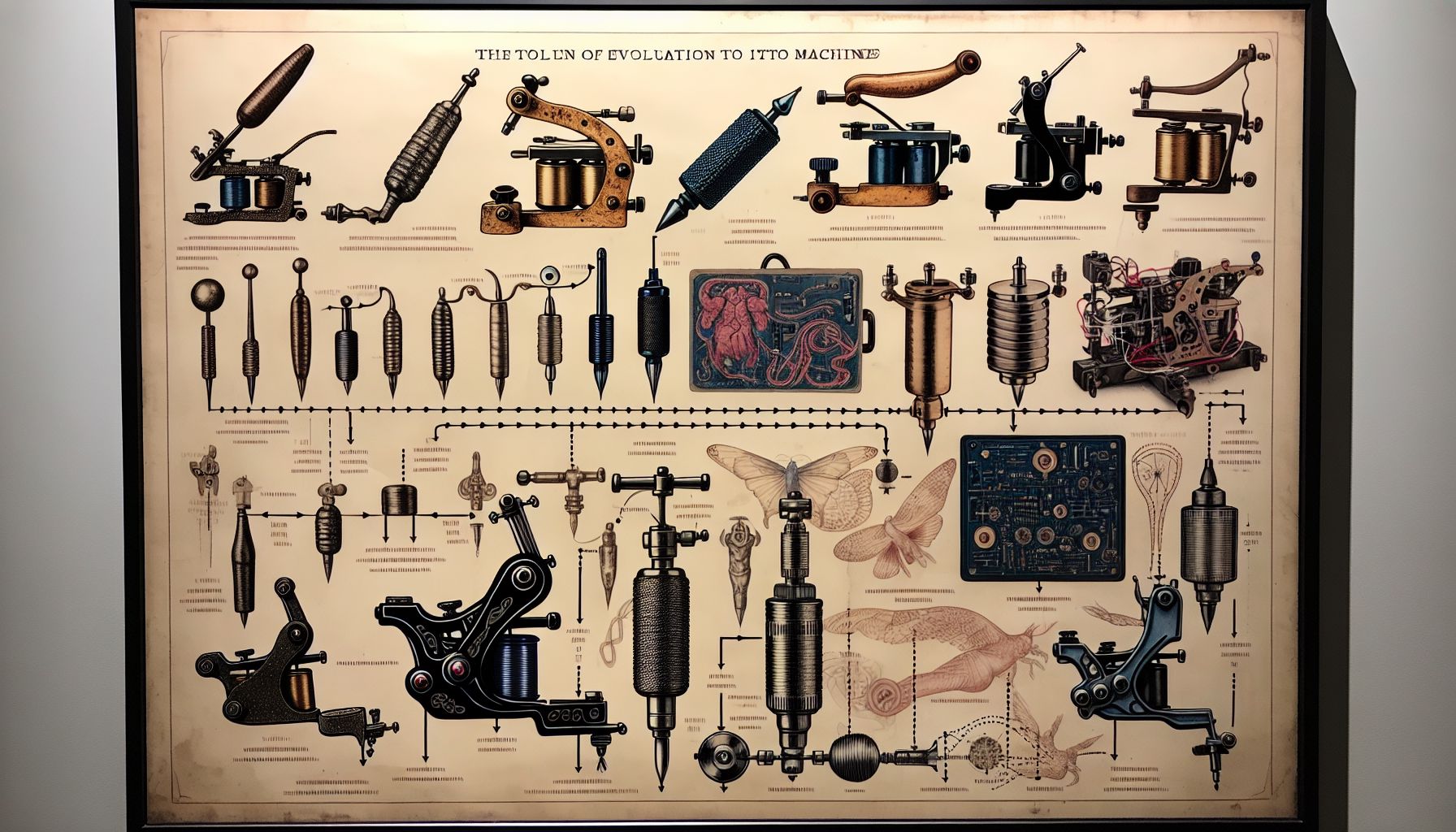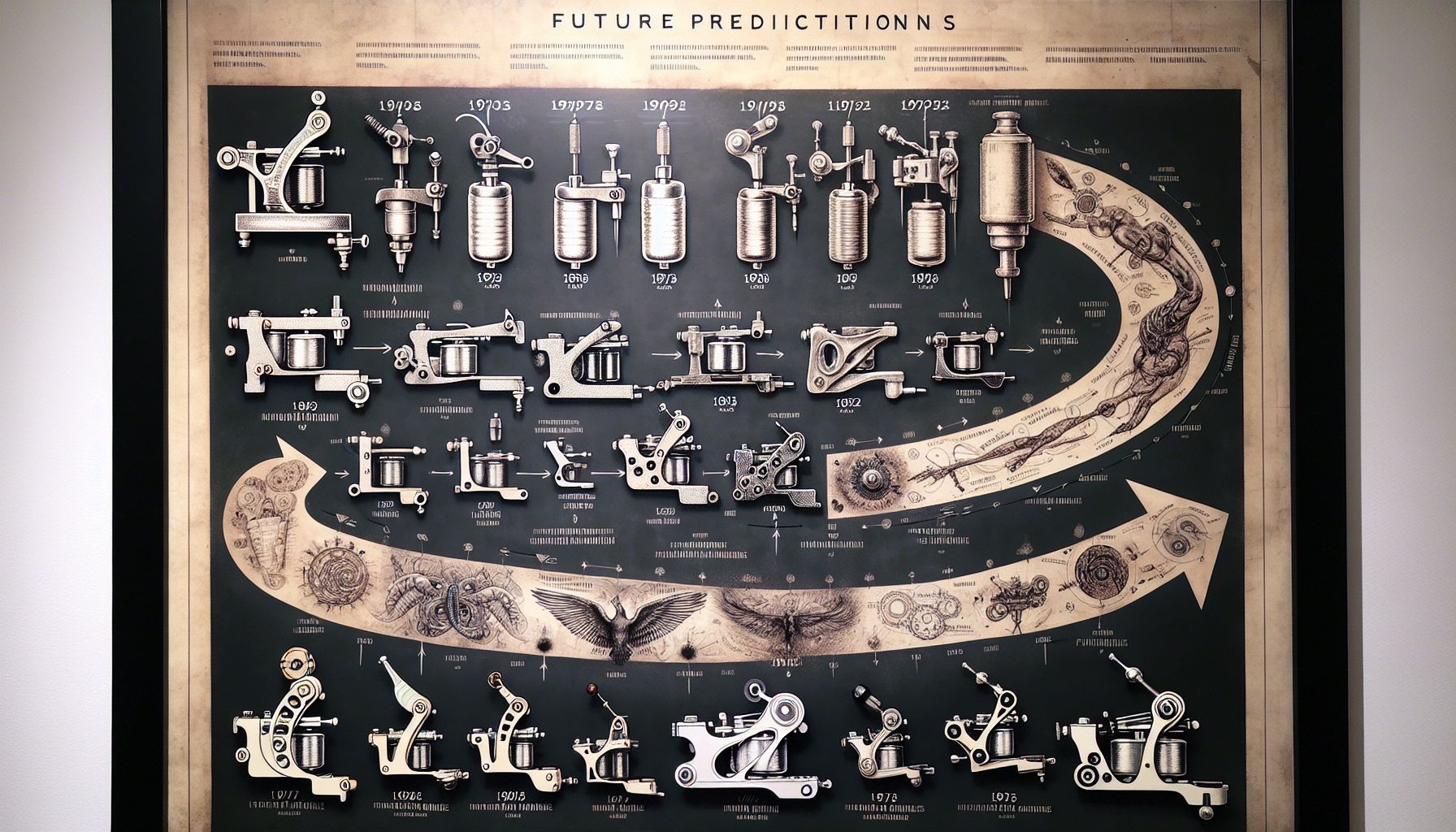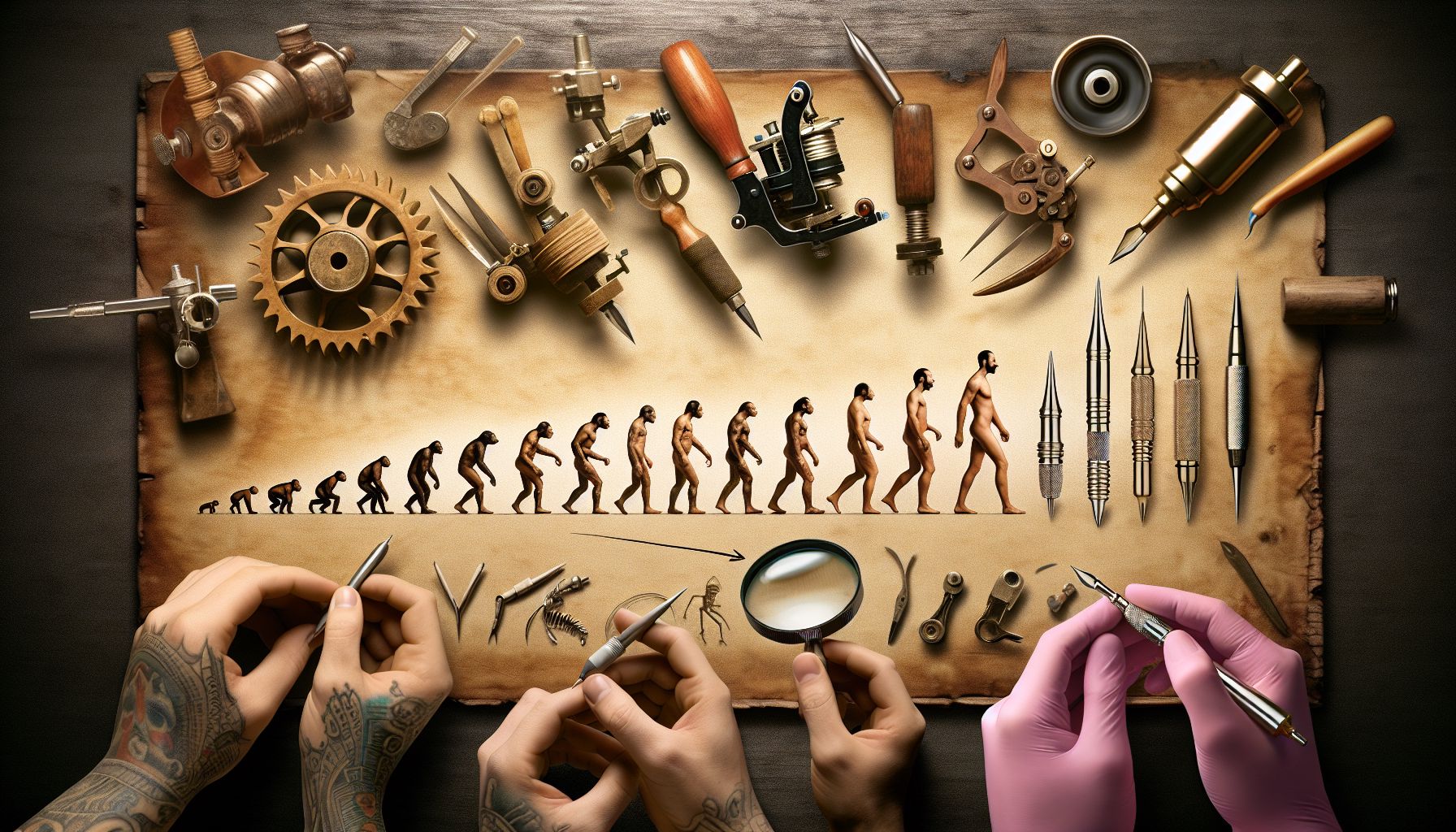In my years dancing with the needle and ink, I’ve watched the world of tattooing leap through remarkable changes. The technological advancements have gifted us with a myriad of tattoo supplies, each bringing distinct flavors to the art table. But amidst the plethora of tools, none have arguably undergone as transformative a journey as the tattoo machine itself. From the rudimentary devices inspired by Thomas Edison’s electric pen to the sophisticated pieces of today, the evolution of tattoo machines is a tale worthy of ink.
The Heartbeat of the Tattoo: A Brief History
The world of tattoo supplies has always revolved around its core—the tattoo machine. When Samuel O’Reilly modified Edison’s invention back in 1891, giving birth to the first-ever tattoo machine, little did he know he was paving the path for an artistic revolution. Fast forward over a century, and the tattoo machine has morphed from a single coil clunker to a sleek and efficient maestro of the dermis.
From Coils to Rotaries: The Evolution of the Tattoo Machine
The traditional coil tattoo machines, reminiscent of that old-school buzz in tattoo parlors, carried their weight quite literally. They were heavy, often cumbersome, and emanated an unmistakable charm. The dual-coil setup became a staple, relied upon for its force and texture. But coil machines demanded a nuanced handling—a certain finesse—to prevent issues like skin trauma and uneven ink distribution.
However, as artists sought more control and comfort, rotary machines entered the fray. These new kids on the block offered smooth, consistent power and unprecedented precision. Their lightweight design and quiet operation made them favorites among artists, especially for long sessions and intricate details. The shift from vibratory needles to the more stable rotary motion marked a significant leap in technique and artistic possibilities.
A Look at Today’s Cutting-Edge Technology
In my personal experience, the introduction of the modern pen-style rotary machines felt like holding the future in my hand. Quiet as a whisper and gentle on the skin, they facilitated shades and lines that were once deemed challenging. With adjustable needle depth and easy-to-use interfaces, these machines were game-changers.
But how do you choose the right tattoo machine among a sea of tattoo supplies? Let me bring forth a slice of wisdom from the workshop floor—a machine should resonate with your personal style and the demands of your artistry. While a coil might be perfect for packing color with a punch, a rotary might be your comrade for an elegant portrait.
Ink to Skin: The Significance of Cohesion
Let’s not forget the unsung hero that completes the tattoo machine—the needle. Today, cartridges have modernized the way we ink. Offering the convenience of switch-and-swap, cartridges allow for quick needle changes, upholding hygiene and reducing downtime. Coupled with the right machine, these needling systems become potent instruments of creativity.
And what of inks, you might ask? The diversity and quality of tattoo inks today are nothing short of extraordinary. As part of critical tattoo supplies, the vast palette available extends an artist’s ability to capture vivid hues and delicate tones. With inks that are organic, vegan-friendly, and various pre-dispersed options, the safety and depth of the artwork have leaped forward.
Personal Anecdotes: The Machines That Marked Milestones
I recall the transition from my first coil machine—a mammoth of metal that sang with every puncture—to the sleek rotary that now rests in my hand. The journey between these two was lined with experiences, trials, and errors. Once, in the early days, a machine gave out during a marathon session. It was a lesson in reliability and the importance of maintaining high-quality tattoo supplies.
Another time, I experimented with a new brand of rotary machines. Its ergonomic design promised less fatigue, but it was the exceptional precision that left me, and my client, awestruck. It was a testament to how the right equipment can elevate an artist’s work.
What You Should Look for in Your Machine
In the constellation of tattoo supplies, your machine is your star. When questing for that perfect tool, weigh factors like:
- Ergonomics: Comfort is key in long sessions.
- Durability: A well-built machine is an investment in your art.
- Versatility: Machines that offer adaptability can accommodate varying styles.
- Compatibility: Ensure your machine works well with the types of needles or cartridges you prefer.
- Maintenance: Opt for machines that are easy to clean and maintain to uphold impeccable hygiene standards.
Conclusion: The Symphony of Machines and Art
The tattoo machine, a pivotal piece among tattoo supplies, has come a long way from its boisterous beginnings. My advice to fellow artists is to embrace the evolution. Each machine holds a story, an improvement, a pathway to exceptional creations. Whether you’re investing in your first machine or your fiftieth, know that it is more than a tool—it’s an extension of your artistic spirit.
Future advancements will undoubtedly continue to morph the landscape of tattoo supplies. However, the heart of the craft remains steadfast—the transcendent bond between machine, ink, and skin. As you navigate this world, blend historical reverence with a keen eye on innovation, and may your art flourish with the echoes of the machines’ perennial dance.



